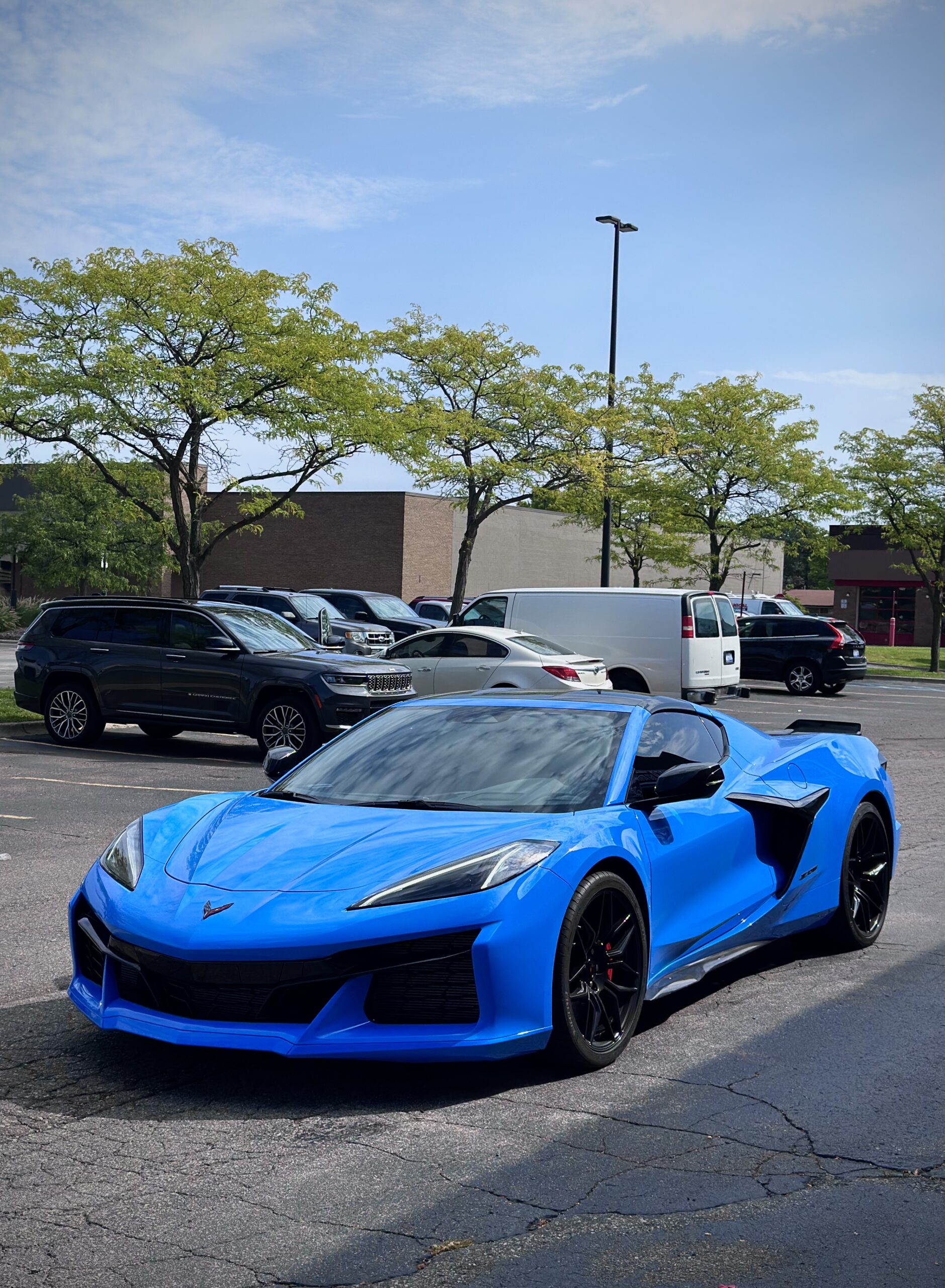Everyday driving exposes your skin to much more sunlight than most people realize. Even with closed windows, ultraviolet rays can pass through regular glass and quietly damage skin cells. This is especially true during peak hours when commutes line up with the strongest sunlight.
Window tinting provides a shield that significantly reduces these risks. By blocking UV radiation and balancing light inside the cabin, tinting helps prevent premature aging, reduces health risks, and improves daily comfort. For drivers considering Window Tinting Dearborn, options offered by TintedAF show how everyday commutes can become safer and healthier for skin.
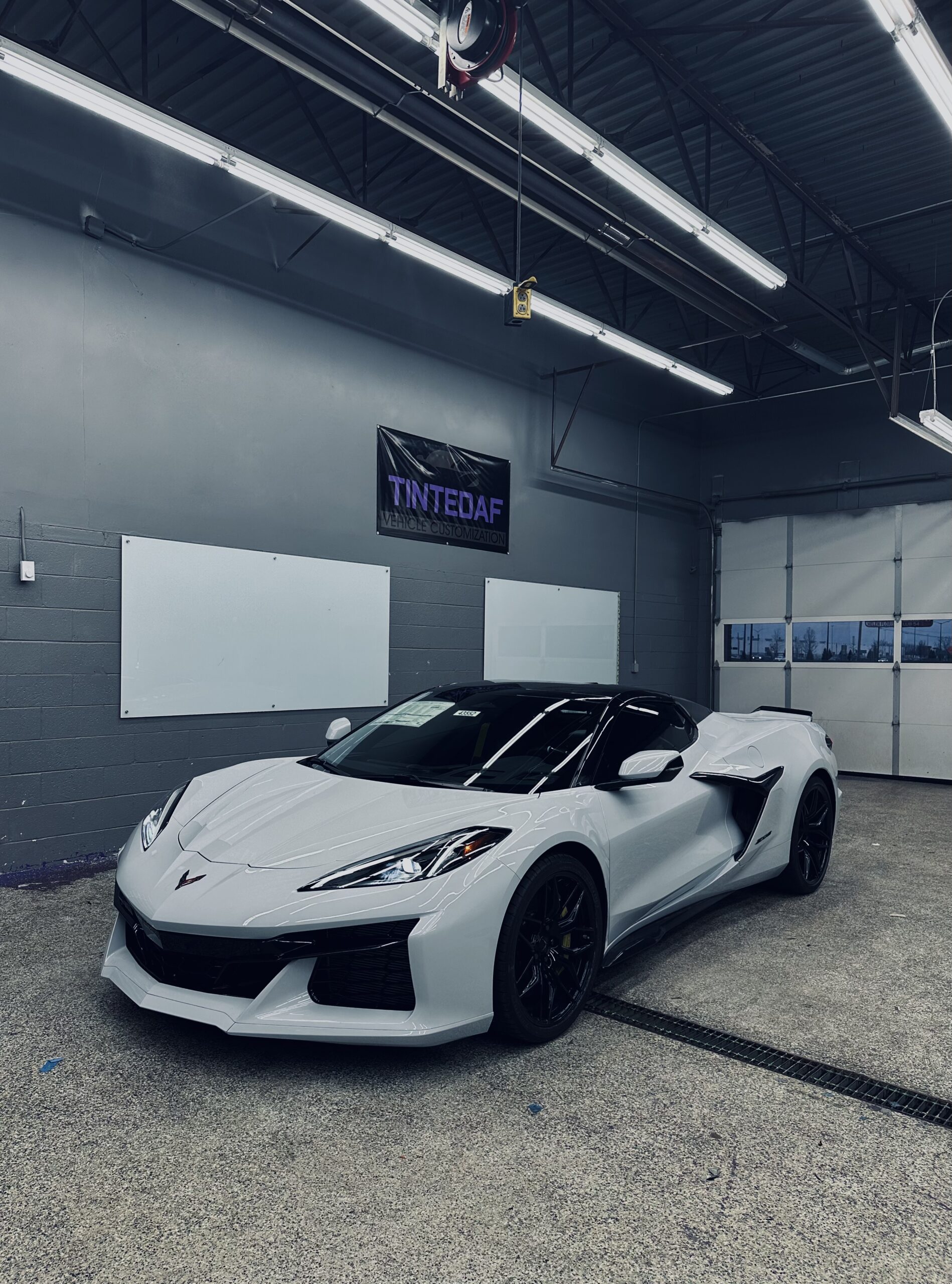
Connection Between Sunlight Exposure And Long-Term Skin Damage
How Ultraviolet Rays Affect Drivers Every Day
Ultraviolet rays consist of UVA and UVB, both of which harm the skin in different ways. UVA penetrates deeply and accelerates aging, while UVB is linked to sunburn and skin cancers. Car windows block some UVB but allow UVA to pass almost freely. This means drivers absorb harmful rays daily, often without noticing their long-term impact.
Hidden Risks Of Routine Commuting In Vehicles
People often think they’re safe inside cars, but sunlight still penetrates glass. The left side of the body, facing the driver’s window, usually shows more skin aging and damage over years. Professional drivers, for example, are at higher risk of developing sun-related skin conditions on one side of their body more than the other.
Why Even Short Drives Can Cause Skin Issues
Quick commutes, such as a half-hour trip to work, may not feel harmful. Yet, repeated exposure every day accumulates into hundreds of hours per year. This low-level but consistent radiation is enough to weaken skin structure, create fine lines, and raise cancer risks. Small moments behind the wheel can create big effects over time.
How Window Tinting Works To Block Harmful Rays
Window Tint Films As A Barrier Against UV
Tint films contain special layers that either absorb or reflect radiation before it enters the vehicle. Quality films block up to 99% of ultraviolet rays while still letting in safe amounts of natural light. This makes tinting an invisible barrier that safeguards skin without making interiors uncomfortably dark.
Difference Between Plain Glass And Tinted Windows
Ordinary glass offers partial protection, usually against UVB rays. Unfortunately, UVA rays, which penetrate deeper and cause long-term skin damage, pass through with ease. Tinted windows solve this by filtering both UVA and UVB. That difference explains why tinted vehicles provide stronger defense for skin compared to untreated glass.
Role Of Advanced Tinting Technology For Protection
Modern tinting technology uses nanotechnology and ceramic particles to increase efficiency. These films not only block harmful rays but also cut heat and glare. By combining multiple functions, advanced tinting ensures safety without reducing clarity. Today’s films transform cars into healthier spaces for daily travel.
Major Benefits Of Window Tinting For Skin Safety
Reducing Early Aging And Visible Skin Changes
Unprotected drivers often see wrinkles and sun spots forming faster on the side of their face and arms exposed to sunlight. Tinting prevents these effects by lowering UVA penetration. Over time, this keeps skin firmer, smoother, and more youthful. Daily driving becomes less of a hidden factor in premature aging.
Preventing Serious Risks Such As Skin Cancer
Sunlight is the leading cause of skin cancers worldwide. Since most commutes happen under direct sun, the risk builds silently. Films with high UV-blocking ability cut this exposure drastically. By minimizing DNA damage in skin cells, tinting lowers the likelihood of cancers developing over years of driving.
Managing Sensitive Skin Conditions Inside Vehicles
People with conditions like lupus, eczema, or rosacea are especially sensitive to sunlight. Even mild rays through car windows can trigger flare-ups. Tinting reduces this sensitivity by keeping harmful radiation out of the cabin. For those affected, it offers relief and consistency during everyday travel.
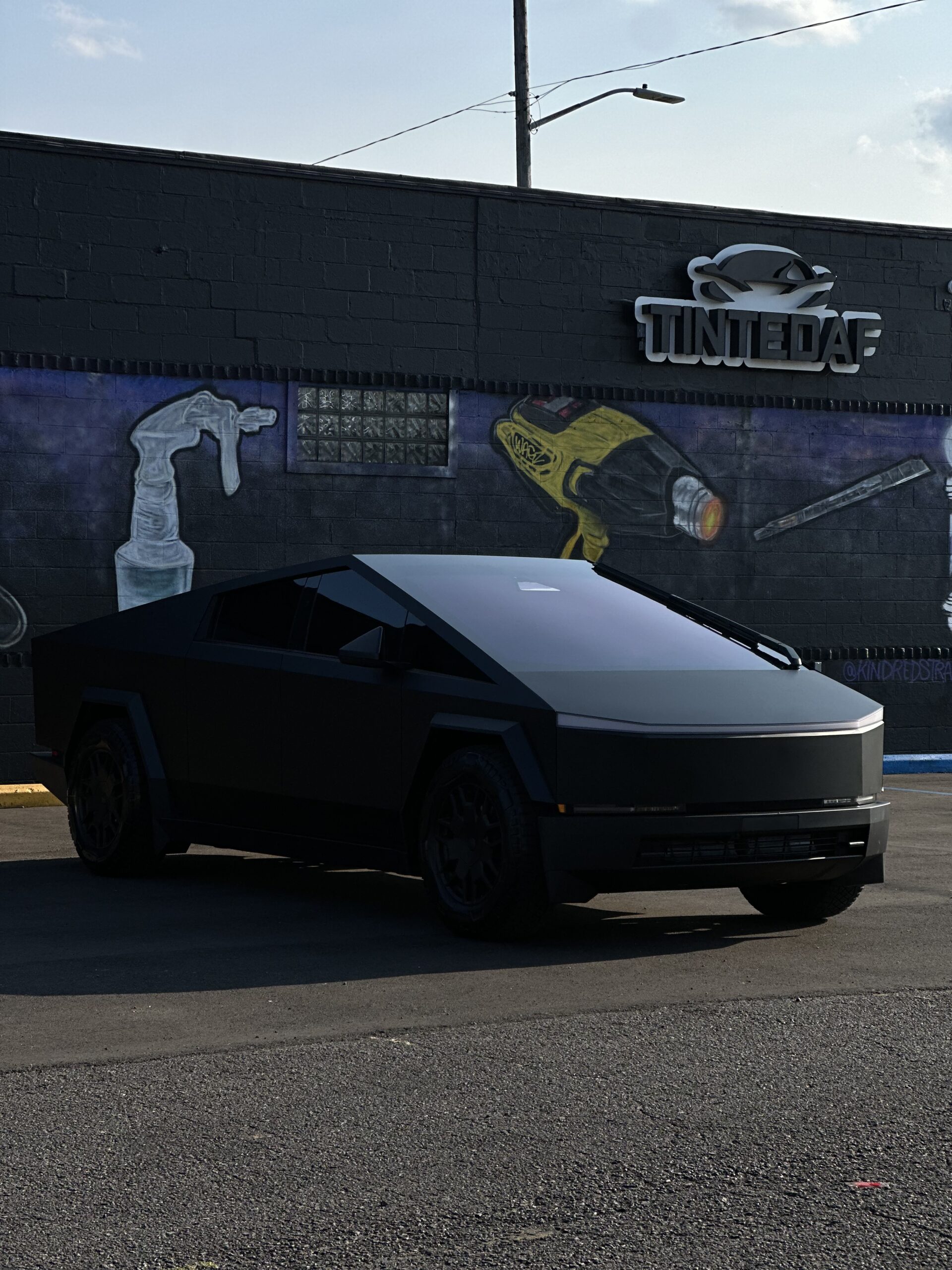
Different Window Tinting Materials And Their Effects
Features And Drawbacks Of Dyed Window Films
Dyed films use a colored layer that absorbs some sunlight, reducing glare and brightness. While affordable, they offer limited UV protection compared to more advanced films. Over time, dyes can fade, making them less effective. For serious skin protection, they’re often seen as a temporary or entry-level option.
Why Metalized Films Provide Stronger Light Resistance
Metalized films contain small metallic particles that reflect light away from the car. They perform better than dyed films in blocking sunlight and heat. However, one drawback is interference with electronics like GPS and phone signals. For drivers who rely on connectivity, this limitation reduces practicality.
Benefits Of Carbon Tint For Durability And UV Defense
Carbon films provide excellent UV protection without interfering with electronics. Their matte finish reduces glare and resists fading over time. This durability makes them a reliable long-term choice. Carbon films balance performance, appearance, and skin safety for daily commuters.
Ceramic Films As The Most Effective Protective Choice
Ceramic tint stand out for their ability to block nearly all UV rays while rejecting infrared heat. Unlike metalized versions, they do not affect electronic devices. They maintain high clarity, which is crucial for night driving, making them versatile and safe.
Why Ceramic Technology Offers Unmatched Skin Safety
Ceramic films last longer, resist fading, and offer the strongest UV defense available today. For drivers focused on skin health, they combine durability with maximum effectiveness. These qualities make ceramic films the leading option for commuters who want consistent skin protection.
Key Factors To Consider Before Choosing Window Tint
Importance Of Visible Light Transmission Levels
Visible Light Transmission (VLT) indicates how much light passes through a film. Too dark a tint can reduce visibility, especially at night. Too light a tint may not filter glare effectively. A balanced VLT ensures comfort, safety, and effective skin protection.
Why UV Rejection Percentage Matters Most
High UV rejection is the true measure of how protective a film will be for skin. The best films offer 99% or more UV blocking, making them far more effective than untreated glass. Choosing a tint with high rejection ratings ensures drivers minimize long-term damage.
Balancing Legal Restrictions With Protective Benefits
Tinting laws vary by state and typically regulate how dark windows can be. Staying within these legal limits is essential for safety and compliance. Fortunately, even lighter legal tint can provide high UV protection if made with advanced materials.
Impact Of Window Tinting On Everyday Commuting
Lowering The Chance Of Sunburn During Hot Seasons
Summer commutes expose drivers to stronger sunlight, increasing sunburn risk. Tinting blocks the harmful rays that cause redness and irritation. For people with sensitive skin, this barrier is crucial in reducing discomfort and damage during daily trips.
Making Commutes More Comfortable And Less Tiring
Excess heat and glare don’t just harm skin — they drain energy too. By cooling the cabin and softening light levels, tinting creates a more pleasant driving environment. Drivers arrive at destinations feeling less fatigued and more refreshed.
Long-Term Benefits Of Consistent Daily Protection
Small amounts of daily exposure accumulate into serious effects over years. Regular use of tinting keeps skin healthier and reduces visible aging over decades of commuting. This investment in protection pays off in stronger, younger-looking skin and lower medical risks later in life.
Local Focus: Window Tinting Dearborn Community Insights
Why Dearborn Drivers Focus On Skin Protection
Dearborn experiences bright summers and reflective winters, creating year-round sun exposure. For commuters, this makes protection essential. Choosing Window Tinting Dearborn helps locals create safer environments inside their cars and preserve skin health daily.
How TintedAF Supports Commuters With Protective Tinting
TintedAF provides advanced tinting options that focus on UV blocking and driver well-being. By offering high-performance films, they help Dearborn commuters protect themselves against everyday sun exposure without compromising clarity or safety.
Caring For Tinted Windows To Maintain Skin Protection
Proper Cleaning Methods To Preserve Film Quality
Harsh cleaners and abrasive tools can damage tinting films, reducing their effectiveness. Using ammonia-free cleaners and soft microfiber cloths keeps the films intact. Regular cleaning ensures clear visibility while maintaining UV protection.
When Upgrades Or Replacements Are Necessary
Older films may bubble, fade, or peel, reducing their protective ability. Replacing outdated films ensures continued safety for the skin. Upgrading to newer technologies like ceramic films improves both effectiveness and durability.
TintedAF Serving the Oldcastle Community and Beyond in Tecumseh, ON
TintedAF is dedicated to serving the diverse needs of the local community of Tecumseh, ON, including individuals residing in neighborhood like Oldcastle. With its convenient location near landmarks such as the Windsor Campground, Roseland Golf and Curling Club and major intersections like Dougall Pkwy & N Talbot Rd and Highway 401 & Highway 46 interchange (coordinates: 42.24319954527274, -82.96879306173511), we offer window tinting services.
Get window tinting Services at Oldcastle Now
Navigate from Oldcastle to TintedAF Now
The Role of Window Tinting in Preventing Skin Aging: Key Statistics
- UV Radiation Breakdown & Skin Aging
- UVA rays cause premature skin aging by penetrating deep into skin layers, damaging collagen and elastin.
- UVB rays mainly cause sunburn but also contribute to skin damage.
- Standard window glass blocks ~99% of UVB but allows up to 79% of UVA to pass through (tempered glass on car side windows).
- Window Tinting Effectiveness
- High-quality UV window films block over 99% of UVA and UVB rays indoors and in vehicles.
- Laminated windshields block ~98% UVA; side and rear windows without tint can transmit up to 79% UVA.
- UV exposure through untinted car windows leads to visible asymmetrical skin aging (e.g., left side of drivers’ faces).
- Impact on Skin Aging & Health
- Incidental indoor UV exposure contributes significantly to cumulative skin damage and photoaging.
- Window tinting reduces genetic skin damage and wrinkles by blocking harmful UVA rays.
- Dermatologists recommend UV window films as a critical part of sun protection to slow premature aging.
- Additional Benefits
- Window tinting also reduces heat and visible light, which contribute to skin and material fading.
- Durable films maintain UV protection for 10+ years with proper care.

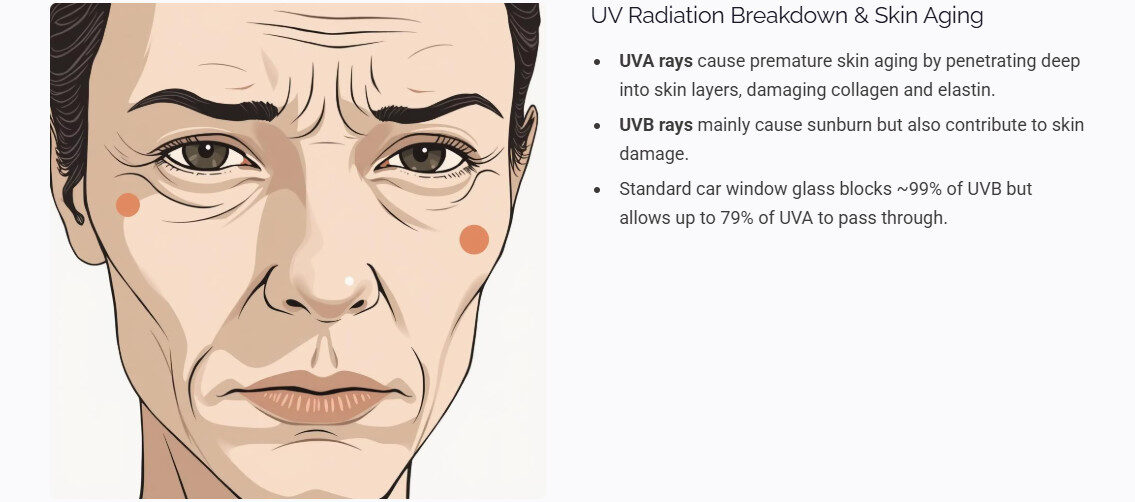
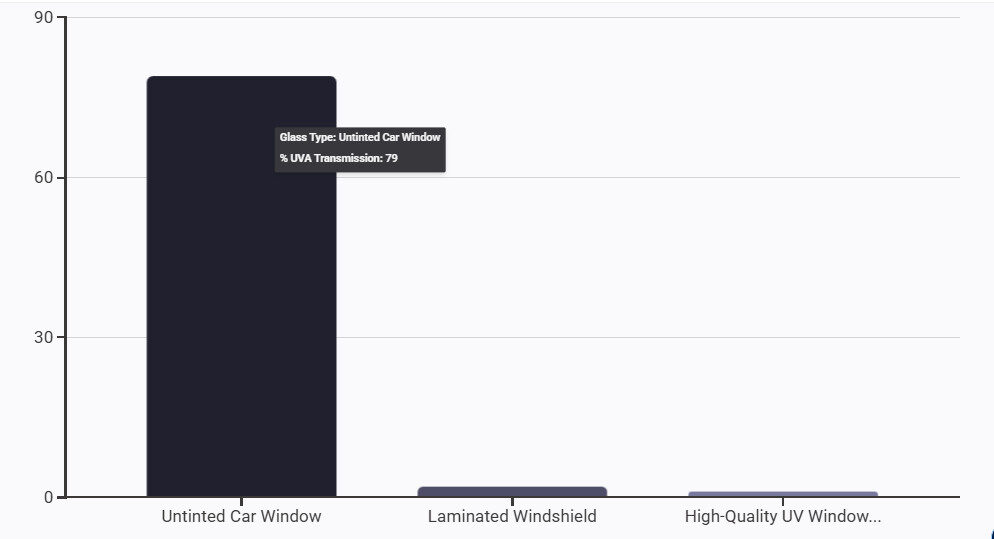

Sources: Skin Cancer Foundation (2025), Yale Medicine, Cancer Council Australia, Fast Lane Scottsdale [Visual: Bar chart comparing % UVA transmission through untinted glass vs. UV window film blocking >99% UVA] [Visual: Side-by-side photo of driver’s face showing skin aging difference due to window exposure]
Key Takeaway On Protecting Skin Through Tinting
Window tinting does more than improve comfort — it actively protects skin from harmful rays during every commute. By reducing aging, preventing sunburn, and lowering cancer risks, tinted windows provide benefits that last well beyond the drive. For daily commuters, choosing high-quality tinting is a simple way to safeguard health in the long run.
FAQs
Q1: Does Window Tinting Completely Block All UV Rays?
No, but high-quality films block up to 99%, which significantly reduces skin damage risk during commuting.
Q2: Are Ceramic Tint Better For Protecting Skin Than Carbon Or Dyed Films?
Yes, ceramic tint offers superior UV rejection and heat control, making it the most effective option for skin health.
Q3: Can Tinting Replace The Need For Sunscreen Inside Cars?
Tinting provides excellent defense, but sunscreen adds another layer of safety. Combining both offers maximum protection.
Q4: How Long Do Protective Window Tint Usually Last?
Most films last 5–10 years, depending on quality and care. Proper maintenance extends their lifespan.
Q5: Is Window Tinting Allowed Everywhere For Skin Safety?
Tinting is legal, but darkness levels vary by state. Drivers should choose films that comply with local laws while offering high UV rejection.
Our Other Blog Posts Related Window Tinting
Why Window Tinting Improves Privacy Without Blocking Visibility
Why Window Tinting Protects Drivers From Harmful UV Rays
How Window Tinting Helps Ease Eye Strain During Extended Driving

